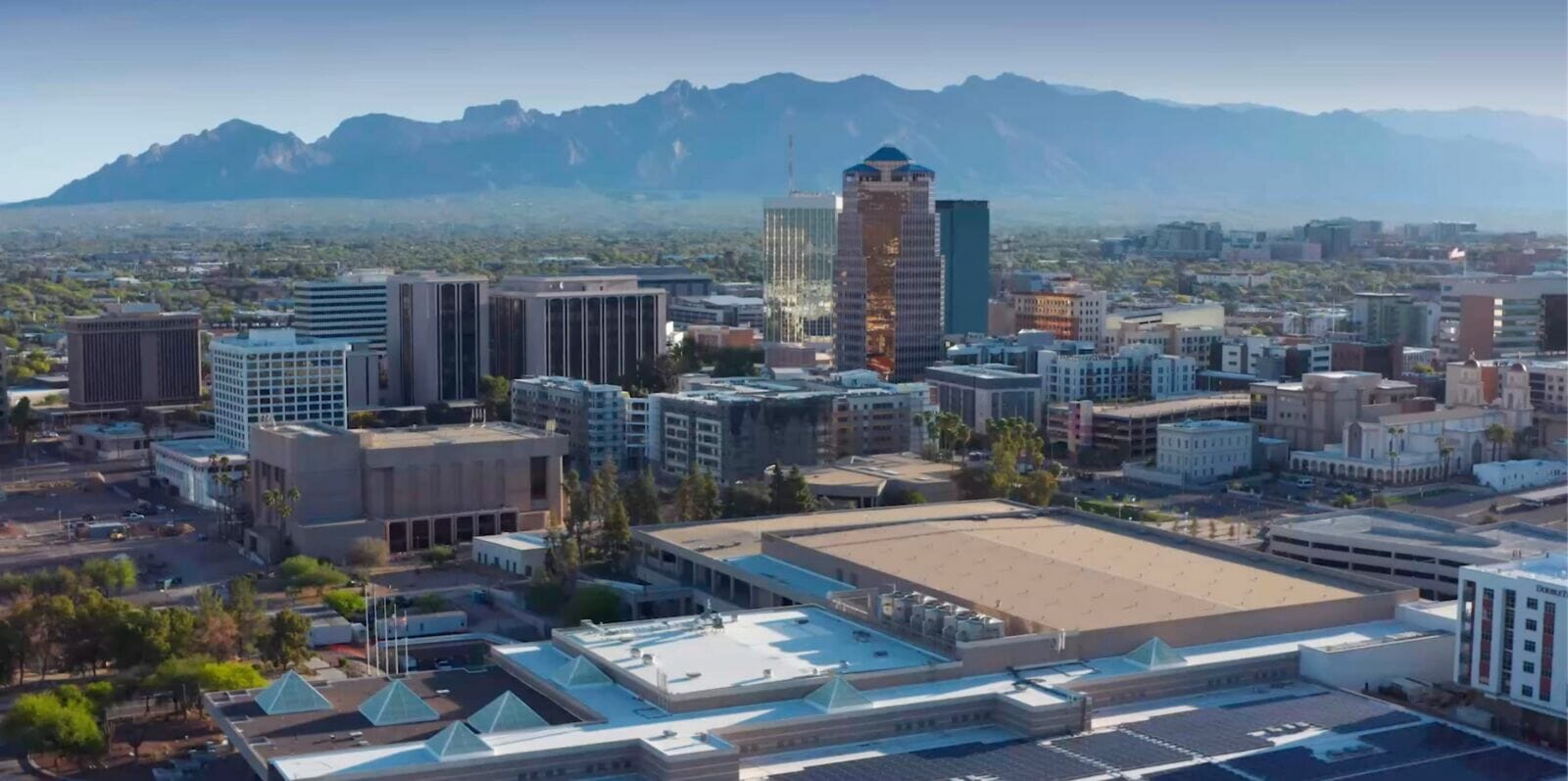The Wandering Albatross has one of the largest recorded wingspans of living birds, ranging on average from 8.2 feet to 11.5 feet. With such a wing extension, the Wandering Albatross not only covers a lot of ground but can also remain in flight much longer than most other flighted birds. Organizations such as Sun Corridor and Arizona Association For Economic Development (AAED) alongside various city and state leaders are much like the Wandering Albatross, serving as Southern Arizona’s proverbial wings — expanding economic reach, dollars and regional cooperation.
READ ALSO: Glendale, Tucson among 10 best cities to buy a second home
Manufacturing and distribution take flight
According to Sun Corridor Inc.’s website, as of Dec. 31, 2021, 195 companies have located and/or expanded to Southern Arizona, generating 54,597 jobs and leading to an economic impact of $31.9 billion. Now, more than ever, the region is sparking interest stateside and globally from a wide variety of industries. Already this year, many notable companies have settled (or plan to locate) in Arizona’s southern-most municipalities.
“We started the year celebrating a grand opening for a local business expansion,” says Barbra Coffee, economic initiatives director for the City of Tucson. “CIS Global’s new facility at 1601 W. Commerce Court was the scene of a Tucson-style fiesta complete with mariachi and flamenco dancing performances, all streamed live to the company’s internal and external customers around the world!”
The celebration was not only a befitting way to showcase the success of the manufacturing company, according to Coffee, but also served as a means of celebrating Tucson’s community and its cultural heritage.
A manufacturer of linear motion slides and power distribution products, CIS Global is projected to supply Tucson with 100 new jobs, producing an estimated five-year economic impact of more than $139 million.
Adds Coffee, “This project shows Southern Arizona’s ability to grow and expand industries in key sectors. CIS Global went from 10 employees to upwards of 100 with this expansion, cementing their investment and commitment to our community for years to come.”
CIS Global joins a rich collection of transplanted Southern Arizona-based manufacturers and distributors.
PowerPhototonic, a company that designs and manufactures wafer-scale optics for advanced lasers and optical systems, is another 2022 addition to the Southern Arizona new-business roster. The Scotland-UK-based business chose to place its U.S. headquarters in the Town of Sahuarita and is projected to yield a five-year economic impact of $32 million.
“We’re thrilled that PowerPhotonic chose the Tucson region and the Town of Sahuarita as the site for its U.S. headquarters, with high-paying jobs in engineering and manufacturing,” says Joe Snell, president and CEO of Sun Corridor Inc. “Headquartered companies become ingrained into the fabric of a community and create demand for support industries, which in turn, attracts other companies. The ripple effect will be felt across our economy.”
Aviation and transportation advances
While manufacturing and distribution remain constant in economic development and financial wealth for the Southern region, aviation stands as an equally strong economic driver. In February, SkyWest Airlines announced its plans to relocate and construct a new aircraft maintenance hangar at the Tucson International Airport (TUS). In addition to supplying ample employment opportunities, the total capital investment of the SkyWest facility is an estimated $41 million (over the next five years), resulting in a total economic impact of $105 million.
SkyWest’s maintenance hangar will be part of a well-established, ever-growing Airport Employment Zone, which, according to Sun Corridor, “supports more than 43,000 jobs,” and includes nationally-recognized companies such as Raytheon Missile Systems, Bombardier, Ascent Aviation, FedEx, HomeGoods and Universal Avionics (among others).
Let’s not forget too, that in addition to serving as an economic engine, TUS is part of Southern Arizona’s well-defined, burgeoning transportation infrastructure. Supplementing commercial aviation, are a host of earthbound transportation projects underway and slated for the future.
“The Regional Transportation Authority (RTA) has completed several projects, adding new travel lanes to accommodate growth in the region, as well as providing new and wider sidewalks, more signalized crosswalks, improved bicycle lanes and enhanced landscaping,” Coffee explains. “These projects have also provided safety features such as bus pullouts, drainage improvements and managed access to businesses.”
Coffee further notes that the Sonoran Corridor, currently in planning with ADOT, Pima County, and the City of Tucson, will create a continuous, access-controlled transportation corridor between I-19 and I-10. “This will improve access to the University of Arizona Tech Park, Tucson International Airport, Raytheon and numerous other industrial sites currently under development,” she says.
These developments, Coffee relays, will ultimately “improve regional mobility and connectivity, while also addressing existing and future population and economic growth.”
To further prepare and sustain the region’s growth and continued development, “The City of Tucson is asking voters to extend the existing half-cent sales tax for an additional 10 years with Proposition 411 going to the ballot on May 17,” Coffee says. “Projected to generate more than $700 million, these funds would be used for improvements to neighborhood street conditions and systemwide street safety.”
Workforce bolstered through education
Like an impressive wingspan helps the albatross remain in flight, a talented workforce fueled by educational resources aids in an economy’s prosperity. And so it is for Southern Arizona.
“When it comes to workforce, Pima Community College is at the core with more than $100 million in investment in its Centers for Excellence driving workforce development in aviation, advanced manufacturing, healthcare, technologies and more,” Coffee says. “These customized workforce programs help employers meet real-time training needs and our region develop certificate programs and other skills that enable us to be successful in attracting and growing industries in target sectors.”
As a top research university, the University of Arizona continues to receive recognition as a top producer of Fullbright Scholars, for providing a host of renowned engineering programs, fostering technology and aerospace through the Arizona Center for Innovation and supplying Southern Arizona with 15,530 employees.
Cochise College and Central Arizona College offer additional opportunities for Southern Arizona students to contribute to its growing workforce.
“In other efforts, this year we celebrated the launch of Arizona Stitch Lab; a program that aims to help fill the gap in the industrial sewing workforce,” Coffee says.
The Arizona Stitch Lab’s partnership between the Sonoran Stitch Factory, the City of Tucson, nonprofit Moonshot and the Pascua Yaqui Tribe is yet another example of Southern Arizona’s collaborative spirit in action. “This program will train about 100 people each year as sewing machine operators, digital pattern makers, 3D modelers, and technicians, while also offering an entrepreneurial track,” Coffee concludes.




